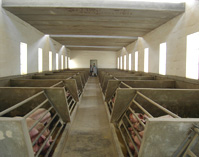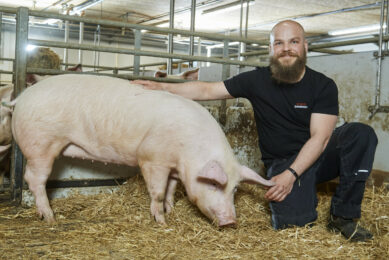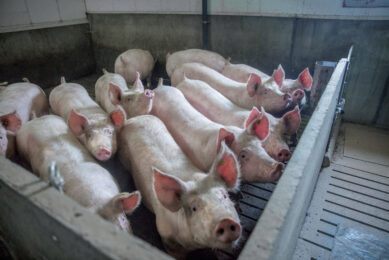Malta: Revitalised pig industry

A switch of genetics and a new approach to health and management has revitalised pig production on the tiny Mediterranean island of Malta.
Since joining the European Union in 2003, the previously-protected pig industry has been open to
competition from other EU states but the country is aiming to maintain self-sufficiency in pigmeat by becoming more efficient and competitive.
New nucleus breeding unit
As part of this the Pig Breeders’ Co-operative Society (KIM Ltd), which represents the 170 pig producers on Malta and nearby Gozo, is setting up a new nucleus breeding unit on the site of the agriculture ministry’s R & D farm using genetics from British pig-breeding company, ACMC Ltd as part of its genetics programme.
As part of this the Pig Breeders’ Co-operative Society (KIM Ltd), which represents the 170 pig producers on Malta and nearby Gozo, is setting up a new nucleus breeding unit on the site of the agriculture ministry’s R & D farm using genetics from British pig-breeding company, ACMC Ltd as part of its genetics programme.
A nucleus breeding unit on the uninhabited island of Comino was recently closed down primarily due to the maintenance costs associated with keeping and manning such a remote farm. In recent years the co-op has had to rely largely on importation of F1 hybrids and GPs together with AI to supply its members with quality genetics. The new nucleus, using ACMC GGPs, will enable them to breed their own AC1 replacement gilts.
Independent consultant Brian Edwards, who has been advising the co-op, says that improved genetics and better health have resulted in a huge turnaround in productivity.
Pig health status
Despite the island situation, farms are close together so it is not possible to maintain high health status. But vaccination for M Hyo, PMWS and AR has been of real benefit. Mr Edwards feels that a major contribution has also come from improved genetics.
Despite the island situation, farms are close together so it is not possible to maintain high health status. But vaccination for M Hyo, PMWS and AR has been of real benefit. Mr Edwards feels that a major contribution has also come from improved genetics.
The Meidam GP female, which contains genes from the hyper-prolific Chinese Meishan breed, boosts numbers born while the use of AI during the hot summer months has ensured that sows are inseminated with viable semen.
Such is the improvement in productivity that the island’s breeding herd is being reduced from 6,000-7,000 sows in 2005 to just over 4,700 sows while maintaining production of slaughter pigs at around 85,000-95,000 per year.
Pig farms in Malta range in size from 10-sow back-yard-type operations to a modern 650-sow purpose-built facility. Many farmers are part-time but the price of feed, which has to be imported, is a factor limiting the profitability of the sector. At an average of 303-330 Euros (£260-£285) per tonne it is 25-45 Euros (£20-£40) more expensive than that on most of mainland Europe. So efficient feed conversion is vitally important. The aim is to reduce production costs by 25-30 eurocents (21-25p) per kg.
Pigs are slaughtered at between 65 and 90 kg, for fresh pork, bacon and other value-added processed products. The country is 75-80 per cent self-sufficient, and could be 100 per cent, but some supermarkets and processors sell cheaper imported pigmeat to balance the demand to the cuts available.
Recently the island has begun to sell surplus live pigs, both weaners and growers, to nearby Sicily for further fattening and use for Parma ham.
Brian Edwards, who provides specialist advice to both the KIM Ltd and the MRRA (the Maltese Ministry for Resources and Rural Affairs) believes that despite the constraints and lack of natural resources, Malta is now well on its way to catching up, and competing with, with EU production standards.











